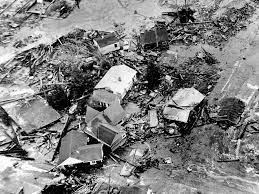Introduction:
On [1960], Chile experienced one of the most powerful earthquakes in recorded history, sending shockwaves not only through the South American nation but also across the globe. The Great Chilean Earthquake, also known as the Valdivia Earthquake, left an indelible mark on the landscape, infrastructure, and lives of millions. In this article, we delve into the details of this seismic event, its impact, and the aftermath that followed.
Overview of the Great Chilean Earthquake:
The Great Chilean Earthquake struck on [Date], with a magnitude of [Magnitude], making it the strongest earthquake ever recorded. Its epicenter was near the city of Valdivia in southern Chile, but its effects were felt across the entire country and beyond. The earthquake occurred along the boundary of the South American Plate and the Nazca Plate, where the Nazca Plate is being subducted beneath the South American Plate, leading to immense tectonic stress buildup over time.
Impact on Chilean Society:
The earthquake unleashed widespread devastation across Chile. Buildings crumbled, roads fractured, and infrastructure collapsed under the force of the tremors. Coastal areas were particularly hard-hit, with tsunamis triggered by the seismic activity, amplifying the destruction. The human toll was staggering, with thousands losing their lives and countless more injured or displaced. The city of Valdivia, closest to the epicenter, bore the brunt of the damage, with entire neighborhoods reduced to rubble.
International Response and Aid Efforts:
In the aftermath of the Great Chilean Earthquake, the international community rallied to provide assistance to Chile. Emergency response teams, humanitarian aid organizations, and neighboring countries offered support in the form of medical supplies, food, and search-and-rescue missions. The swift and coordinated response helped mitigate further loss of life and provided crucial aid to those affected by the disaster.
Environmental Consequences:
Beyond the immediate human and infrastructural impact, the Great Chilean Earthquake also had significant environmental repercussions. The seismic activity altered landscapes, triggered landslides, and reshaped coastlines. Environmental hazards such as soil liquefaction and aftershocks posed ongoing challenges to recovery and reconstruction efforts. Moreover, the release of energy during the earthquake may have contributed to subsequent volcanic activity in the region.
Long-Term Recovery and Reconstruction:
Recovering from the devastation of the Great Chilean Earthquake was a monumental task that required years of dedicated effort. Reconstruction efforts focused on rebuilding infrastructure, restoring essential services, and providing support to affected communities. Investments in earthquake-resistant building codes and infrastructure improvements aimed to enhance resilience against future seismic events. However, the socio-economic impacts of the earthquake continued to be felt long after the ground had stopped shaking, underscoring the need for sustained support and resilience-building measures.
Lessons Learned and Preparedness:
The Great Chilean Earthquake served as a stark reminder of the immense power of nature and the importance of preparedness in mitigating disaster risk. Chile, located in a seismically active region known as the Pacific Ring of Fire, has since redoubled its efforts to strengthen earthquake preparedness, including early warning systems, public education campaigns, and emergency response protocols. The experience gained from the Great Chilean Earthquake has informed disaster management strategies not only in Chile but also in other earthquake-prone regions around the world.
Conclusion:
The Great Chilean Earthquake stands as a testament to the resilience of the human spirit in the face of adversity. While the scars of the disaster may linger, so too does the resolve to rebuild, recover, and emerge stronger. As Chile continues its journey of recovery and renewal, the lessons learned from this seismic event will endure, guiding future efforts to build safer, more resilient communities in a world where the threat of natural disasters looms large.






